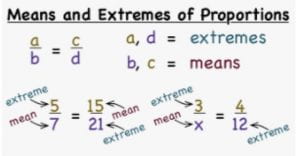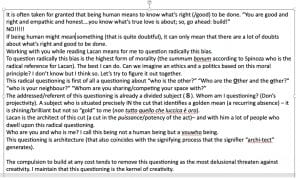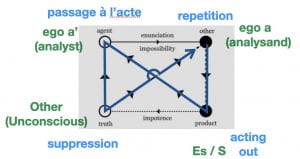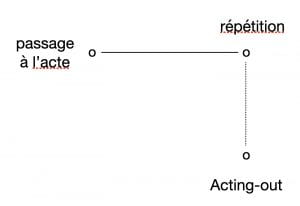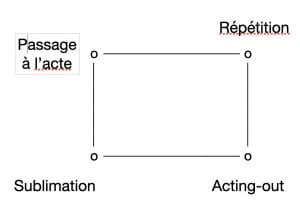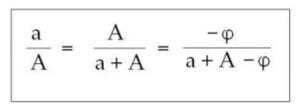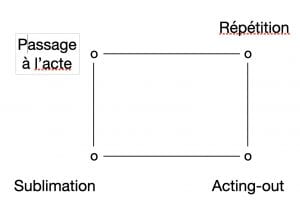This reading group tackles Lacan’s Seminar XIV, The Logic of Fantasy. The French transcription is available here. Pagination for the French transcription is here. A helpful synopsis of Lacan’s seminars, from Lacan.com, is here.
YouTube Videos
Narrated and silent videos address the problem of the English texts generally lackluster transfer of (mostly) spiffy graphics from the French transcript. For the fastest entry into the speculative domain of graphic transformations as a way into Lacan’s own highly-developed visual sense, click here.
what is jouissance?
This mysterious Lacanian substance weaves through the entirety of Lacan’s thinking and writing, so workshop members have come up with some short, and some not-so-short arguments about its nature and role. DK involves the Gettier Table, an elaboration of the (failed) theory that knowledge is defined as Justified True Belief.
what is the “well-said” (bien dire)?
Almost as mysterious as jouissance is Lacan’s reference to “the well-said” in the text of his presentation on French television, Television. According to Lacan, sadness is rather to be scorned than pitied, and at first this seems to be drawn from the Catholic position of defining despair ad a sin. However in Seminar XIV, session 19, he cites Edmund Bergler’s book on Basic Neurosis, where the subject who experiences humiliation (the “passive hero” of literature, brought into modern times as the Rodney Dangerfield comedian (“I don’t get no respect!”) that can be traced back to the fort/da of Freud’s grandson. Lacan differs from Freud, who conjectures that the child rehearses the mother’s absence, by suggesting that the distance function of near and far, reflected in the child’s use of “go to the fwont (front)!” as an insult (equivalent to “go to hell!”) is the gateway to the Symbolic, making the front into a cut that is a version of the mirror in the mirror stage.
The presentation essay by Laure Naveau addresses “the well-said” in Hamiltonian terms and connects the sadness of humiliation to the laughter of Analysis’s “last word” that the Unconscious enjoys, in the form of laughter. This is revolutionary in that we can, with Lacan in Seminar V (Formations of the Unconscious), where he connects metaphor and the joke. The joke after all is the most vivid demonstration of what the Hamiltonian is: a localization of a dynamic (in)stability that requires the paralysis of the “joke-ee” (the auditor of the jok-er’s exposition). The s” of 1/s” of the metaphor formula is laughter, the “last word” that the Unconscious of the joke enjoys and, in enjoying, commands us to enjoy.
The well-said is, in short, epitomized by the joke, which finds its grammar in metaphor and its logic in the etiology of melancholy. If only Lacanian theory would include Raymond Klibansky, Erwin Panofsky, and Fritz Saxl’s monumental study, Saturn and Melancholy! It would lead us to Dürer’s clever anagram misspelling of Melencolia (transferred into limen coeli, or “gate of heaven”), which we can locate at both the center and edge of the Thesean labyrinth, which in fact has the projective form of the torus, both in terms of having two voids, one continent (a), one incontinent (A), and a fundamental polygon where the passage à l’act is the delivery of the punch line, the énonciation or performative component by which the metonymical signifying chain, held together by the “x” of the logic of the joke as proposition, finally delivers. This is the command to Enjoy! by which the Other reveals its comic voice and relieves us from the burdens of Capitalism.
Did we not know this already, from the moment Freud articulated his first topology of the psyche in terms of Chicko (the Symbolic ego), Groucho (the super-ego Other), and the harp-playing trickster Id, Harpo? Are we not led to consider what all mathematicians will tell you, that space is actually 2-d? This is not “only 2-d” but rather the form of the Real, to which we add the dit-mension/mansion of our own Imaginary (which every culture can fine-tune). The planet earth is a sphere in Euclidean terms but we experience it as a torus, because every landscape is flat (the rolling marble test) and the vanishing point moves along with us every time we change position (cathesis). Each profile is “isomeric” in that it must combine polarities (an Escher construct), the visibility of our senses and the invisibility that is virtual. The flat-earth theory is not the one promoted by Luddite cranks but the necessity to combine the truths of mathematics with our own experience. Too bad the brilliant Iranian mathematician, Maryam Mirzakhani, did not live to remind us of this.
Follow Naveau’s argument by reading the essays by
AS ALWAYS, I must express my gratitude and joy for the assistance offered continually over the past decade by my friend and intellectual guide, Alireza Moharrer, who introduces me to one idea after another, even though he realizes my intellectual limitations. Thank you, Ali, “the Hamiltonian” was a mathematical concept aching to be extended to psychoanalysis.
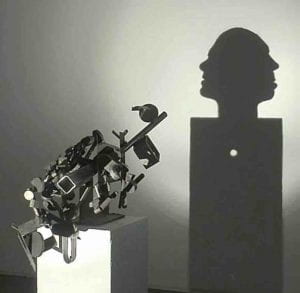
the figure–ground analogy
This is the first of a series of inquiries into standard ideas and expressions of visual experience. The figure–ground distinction is fundamental. Without it there can be no conception of depth, and while it seems to be automatic or even a given of any visual experience, it is highly constructed and even difficult to theorize. This essay looks at the role played by the profile, silhouette, shadowing, and the cut in the production, simultaneously, of an invisibility co-terminal with visibility. The idea of theft introduces the ethnographical feature of a debt deferred, a temporality it what otherwise would seem to be exclusively a visual simultaneity.
This essay will develop alongside other issues that are simultaneously experiential, ethnographical, and philosophical: conatus, cathetus, parallax, metonymic chains, “the perfect shadow,” foundation rituals, epiphany, metaphor, Lacan’s “mean and extreme,” parapraxis, and magic.
Thanks to Jodi LaCoe for bringing up the issue of Claude Bragdon’s work in relation to the popular idea of projectivity as a fourth dimension. This is a “Euclid-plus” view, the idea that Euclidean geometry is foundational. But, this is not the case. Projective geometry is foundational in the sense that Euclid can be derived from projective geometry but not the other way around. Read the latest version of this inquiry here. A “footnote” added August 5, 2022, introduces the idea of audio-activity (the way a signifier is both a content and an instance) to tie Lacan’s arguments about the unary trait, repetition, alienation, and projectivity together.
the stereogram analogy
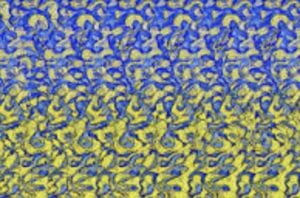
Reading sessions 14/16 requires a new kind of reading that may be, actually, the only way to read Lacan in general. The stereogram (left) is a flat pattern with tiny differences in spacing that force the brain to “redirect the data” to create a three-dimensional form that is confirmed by a “neural parallax” that takes over after normal binocular parallax has been neutralized by staring into the distance. The two eyes’ parallel stare defines a vanishing point that moves along with the viewer (“cathetus”), confirmed by the viewer’s movements and ability to “look around” inside the emergent spatial sandwich. This essay and set of notes reviews the materials in these two sessions (session 15 involves Zen Buddhism) in light of the need for a theory of reading designed to match Lacan’s mi-dire style of lecturing.
Just as cathetus (lateral movement within the stereogram) is a result of the formation of an emergent 2-d form thanks to this new kind of parallax, the slide-rule analogy Lacan introduced in session 14 makes sense as a viewing device with its own principles of depth, based on even spacing of logarithmic numbers (the powers of the objet petit a) requiring a zig-zag alternation between odd and even powers — reminding all architects of the way Vitruvian “ichnography” involves pacing out the plan of the building on the ground of the site, anticipating the orthographic raising of the structure.
If this is too much, read the essay on homeostasis for a summary of the issues involved.
Considering our colleague Claudio Sgarbi’s difficulty adjusting his eyes to see the stereogram form, I produced a lengthy position paper on the relational net holding together the key terms conatus, cathetus, orthography, sorites, and parapraxis. I should have added anamorphosis and parallax, but the paper is already over 3000 words long.
The stereogram constitutes a way of inserting Giambattista Vico’s “proof of the body” (The New Science, §345) into Lacan’s program. Seminar XIV presents the “slide-rule analogy” where the concept of mean-and-extreme can be extended to Lacan’s theory of sexuation, metaphor, and discourse via the direct personal experience of the stereogram, where focus is momentarily paralyzed to reveal a thin/thick space where conatus and cathetus combine to create a figure that emerges from a patterned ground. In this, Mladen Solar’s aspiration to account for Lacan’s entire œuvre with the idea of anamorphosis and Jacques-Alain Miller’s equally ambitious claim for the idea of extimité can be met without Zizek’s standard explanation going from parallax to Karatani’s Transcritique and, thereafter, a Kantian emphasis on ontology. This may be one way, in fact, of dealing with Object-Oriented Ontology — by providing an experiential way of proving what they actually have claimed but failed by a negative critique of Kant and Hegel.
Read the letter outlining this research program using the idea of the stereogram.
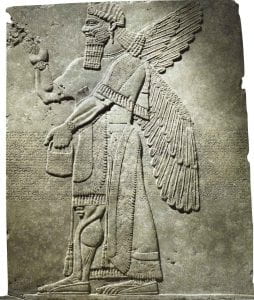 Correspondence: Claudio Sgarbi & Don Kunze
Correspondence: Claudio Sgarbi & Don Kunze
The essence of this study project has been conversations and exchanges provoked by differential readings. In this exchange, Call and Response: Claudio Sgarbi & Don Kunze, the important issue of repetition becomes the focus of how psychoanalysis might relate to architecture.
Sgarbi: “Let’s go back for a moment to our example: the brick builder or the designer of brick buildings who is stuck/mentally impaired/doubtful/caught by painful dilemmas…..and cannot place a brick on top of another or cannot design the placing of one brick on top of another. It is a very interesting case of acting impairment or a problematic relationship between potency and impotency (any sexual allusion is very welcome).”
DK: “I think it’s very interesting to use the brick builder (Fig. 1), since this is repetition at its finest! Repetition centers us in the Lacanian field, since it is what distinguishes the speaking animal from the non-speaking animal (returning to a place/situation and NOT finding satisfaction). However, does potency/impotency add a new angle? Eventually, I would say it’s key, since in the case of phallic demand (the response to the perceived desire of the Other), it’s critical that failure, the –ø, is the defining factor. The poor organ that men celebrate as the essence of their sexuality is not dependable, subject to criticism, and anxiety–prone. It is, for the Turks at least, so central that in the case of –ø dysfunction, life is not worth living. It “sticks out” and is thus vulnerable to sacrifice. Even when castration is Symbolic (almost always), the effect is the same, and it shows how the –ø is a creature of the Symbolic, a side-effect that becomes a central controlling feature that makes us liable for the Symbolic’s technical defects and communicative failures. A slip of the tongue or bungled explanation subjects us to this all-important biological catastrophe!”
Optimistically, this call and response concludes with hopeful advice:
The Tower of Babel and Thesean Labyrinth are the architectural incentives to include projective geometry, since without projective geometry these structures are unintelligible. They involve the void, the Act, and the suppression of the Symbolic, i. e. metaphor. We do not have to “justify” talking about psychoanalysis in psychoanalytic ways. But, equally profitable is your example of the brick wall, and the connection to the king as the “humiliated” brick-layer in Assyrian tradition. The humble hero, the paralyzed hero (hero originally meant just “any dead person”), takes us back to the theology of the chthonic origin, the creation of human form out of mud: “Hans Adam wer ein Erdenkloss,” wrote Goethe. We do not need an excuse for making these connections. Those who have not made them are remiss.
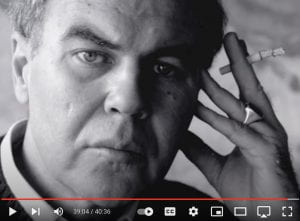 Raymond Carver, “The Cathedral”
Raymond Carver, “The Cathedral”
Wikipedia: “Narrated by a man whose wife is old friends with a blind man, the story shows the husband/narrator’s distaste for the blind man who is coming to visit him and his wife for a few days. At times it seems that the man is jealous of the blind man for being so close to his wife; at other times it seems that the husband is disgusted by the man’s blindness. In the end they bond in a way through the communication they share about what a cathedral looks like.” Carver’s artful application of the writer’s trick of the unreliable narrator provides us a way to experience the stereogram in narrative’s non-visual visualization, which turns out to be the subject of the story. The unreliable narrator of “The Cathedral” convinces us that he is indeed unreliable in his aggressive objection to the blind man’s visit and lack of curiosity about the experiences of others. Read the story here.
The construction of a cathedral comes into strange affinity to the building of the story and the experience of the blind, as a form of kenosis. We can reverse-engineer this to begin with kenosis and “count backward” to the point where the count begins where kenosis is number 2, our first encounter. The failures of the narrator are perfected in the voice of the jealous husband, making us aware of the necessity of error and misdirection in the discovery of a latent truth. We might conclude that all truths are latent, that latency is in fact truth, rather than anything we might count as latent. The story ends with an improbable situation: a blind man instructs a sighted man how to draw something that the blind man could never have seen, and which the sighted man realizes he has seen but never known how to see. “It’s a strange life, we all know that.”
Watch the YouTube audio presentation of the story read before a live audience by James Naughton, American actor and director.
The stereognosis of the blind man “feeling” the drawing captures the function of orthography and, in relation, the projectivity of the surface. Naughton’s expert reading captures the narrator’s transition from aggression to realization as the 2-d drawing becomes real thanks to the fact that he, too, has decided to do without looking at it. “It’s really something,” the admission that forms the conclusion that adds a sagittal dimension we hadn’t expected, a depth that was given in exchange for having it removed just moments earlier.
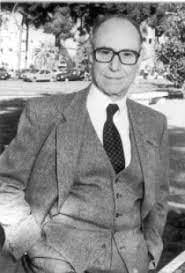 Session 15: André Green’s Presentation
Session 15: André Green’s Presentation
The Gallagher translation omits the presentation of André Green, whom Lacan invited to his lecture series to speak on March 15. Wikipedia: “In the early 1960s, Green could be found attending Lacan’s seminar, without abandoning his affiliation to the SPP — a bold decision which for some time enabled him to straddle the competing strands of French psychoanalysis from an independent position. As the decade progressed however, he moved further from Lacan, and finally broke with the latter in 1970 by criticising his concept of the signifier for its neglect of affect.” Green’s presentation connects many dots and relates Lacan’s project in Seminar XIV to Freud’s ideas, in particular about the death drive.
The translation here is from the French transcript to Googlish, with no editorial clean-up of punctuation or paragraph form. “Take it as you find it.” Session 15 “Googlish” translation.
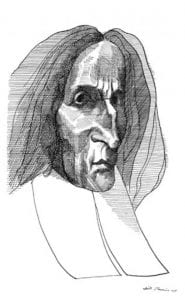 the two conatuses
the two conatuses
The geometrical/algebraical issues that begin with session 13 continue through sessions 15 and 16 and further. But, with Lacan’s slide-rule analogy it is possible to see how the “orthography” of the powers of the objet petit a allow the reader to address a viewing plane that, like the stereogram, thickens to allow the presentation/emergence of a form that is simultaneously 2-d and 3-d. The physical experience of a stereogram confirms the relation between two terms that play no direct part in Seminar XIV: conatus and cathexis. Conatus is the principle of “the same” (idempotency) that allows for and compels motion. It is drawn from Medieval Scholasticism but in the 18c. Giambattista Vico gave it a special definition, moving from his physicalistic interpretation in the De Antiquissima (1710) to a role in the formation of the historical subject in his work on natural law.
Read this Googlish translation of Tommaso Parducci’s “On the Concept of Conatus in Vico’s Philosophy” to see how the two conatus idea makes sense of the divination practices, settlements, and foundation rituals of Cyclopean cultures, and how Vico’s theory of metaphor coincides so remarkably with Lacan’s. Available in the original Italian version.
Vico’s conatus is a version of Freudian homeostasis and a key to the role of the death drive as Lacan took care to realize as the interval “between the two deaths.” The projective topology of this interval is clear, given the palindromic equivalence of the two “directions” determined by the order of literal death in relation to the Symbolic death. Antigone experiences a Symbolic death before her literal one, while the essence of her complaint to Creon is that her brother Polynices has not been allowed a proper Symbolic death following his literal one. The interval is a circuit (self-intersecting) but non-oriented, and the space of the interval is imagined as a fractal labyrinth, whose escape sequences involves two directional inversions, as layers 321 and 765 reduce to layer 4 as the ultimate exit. Palindromic homeostasis is the numerical equivalent of conatus, as any sequence demonstrates (4/1, 3/2, 2/3, 1/4, Σ=5). In the more durable palindrome of the Fibonacci numbers, 1/2, 2/3, 3/5, 5/8 … produce successively more accurate estimates of Ø, a fact that Lacan explores in detail in sessions 14 and 16 of Seminar XIV, The Logic of Phantasy. The interval between the two deaths will thus always be encountered as a dual, a palindromic conatus.
mean and extreme
In Seminar XIV, Lacan often uses the term “mean and extreme.” What is the exact meaning of this? Is it simply a way of indicating a point inside the interval defined as the Big Other, A, and the little a positioned outside the interval? The answer is more interesting. This essay reviews the mathematical meaning of these terms, their relation to metaphor and parapraxis. It seems that Lacan has unknowingly set himself up to be “joined” to Vico’s theories about metaphor and culture, as if the two theorists had at one point been the same person!
The mean and extreme concept is critical to many counting systems. For the interesting case of the Flamenco compás, click here.
claudio’s conjecture
The problem of why building is compulsive (click to enlarge):
D. Kunze’s response was an over-elaborate, undisciplined list of points, reluctantly made available here.
the trouble with thirteen
Seminar XIV is difficult enough to read, but the lack of visual materials, included in the French transcript, in the Gallagher translation constitutes a nearly insurmountable barrier. It’s particularly a problem in sessions 11–13, where arguments hinge around Lacan’s connection of the sexual non-relationship to the Golden Ratio (Fibonacci series: 1, 1, 2, 3, 5, 8, 13 …) and the self-enclosing forms that connect to projective geometry’s non-orientation and self-intersection. Session 13 images have been collected in this PDF and linked to passages in the Gallagher text. The text for the above figure (4) reads: Figure 4. “For the remainder, which is here, which is obviously 1-o, we will proceed in the same way. We will reduce it within the larger one. And so on to infinity, I mean, without ever being able to arrive at the end of this process. It is in this that there consists precisely the incommensurabilty of a relation that is nevertheless so simple.”
the slide-rule analogy
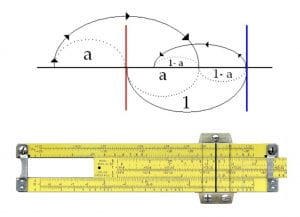
It is novel to introduce an engineer’s pocket calculator into psychoanalytical discourse, but even more bold to claim that it can ventilate the confusions, collapses, and muddles in theories! But, Lacan does not make claims thoughtlessly. In fact, a patient reader of session fourteen of Seminar XIV, “The Logic of Phantasy,” will realize not just the efficacy of the slide-rule example but Lacan’s ingenuity in re-thinking this mechanical device as a way of opening up, first, the way the Fibonacci number series (1, 1, 2, 3, 5, 8, 13 …) relates to the unary trait and, second, how the Fibonacci ratio (Ø) relates to projective geometry. Watch the video. Lacan uses his diagram relating the A, the a (objet petit a) and the one as equivalent to the Autre, as the unit of the spatial interval within which he will interpolate values of a^0, a^1, a^2 … a^n, whose powers divide the interval into left and right, with the “cursor” of his slide rule moved to the vanishing point of this “deepened” space, converging on the value of the Fibonacci Ø. The palintropos harmoniē of the left-right progression establishes the vanishing point on an infinite horizon by “walking” the stare of directed at the “section cut” of the rule’s evenly spaced values of the powers of a. In this way the rule surface is thickened in the same way the stereogram is thicker by sliding an almost-uniform pattern across itself to produce an emergent 3-d form. The slide-rule cursor then performs the role of the katagraphic mark, the “cut into nothing,” that is taken up elsewhere by Lacan (the “injunction of Popilius” — the effectiveness of drawing a magic circle around the invading King of Syria) and famous in the New Testament in the case of the Sanhedron’s “forced-choice” imposed by bringing the woman convicted of adultery to Jesus, to have him prescribe the pre-determined sentence of death by stoning. Jesus responded by kneeling to the ground and doodling on the pavement. The word katagraphein is found only one other time in the Bible (Jean-Daniel Causse, “L’identité et l’identification: des sœurs ennemies*?”). The connection of Lacan’s slide-rule analogy to the katagraphic mark is critical. It provides a bridge between the unary trait as, itself, a bridge between the (unconscious) traumatic encounter — mimesis — and the symptom that is repeated as a message (to whom?), as in the case of Dora’s famous cough. The unary trait is the “audioactive” 1, the 1 that is the “one of 1” or, palindromically, the “1 of one” — act and content combined in a dynamic exchange of ex falso quodlibet sequitur, the principle that the irrational element (the acting-out that occurs within the precinct of the Symbolic or, alternatively, the passage à l’act that takes place outside this precinct) opens they way to a combination or folding at the point of suppression, where a liminal or latent signifier will serve a cluster of metonymic terms as a center of gravity and predictor (“tell”) of a future anterior moment of revelation (i. e. the structure of metaphor). This convergence is proof of metaphor’s “toroid” form, its function as a specification sheet of homeostasis involving two circuits/voids. Here, the critical equation is “void=circuit.”
Or, read the notes on other matters in Session 14
pandemic equation: continence/incontinence
 (in)Continent Topology of Pandemics, Screens, and Scripts, with Anahita Shadkam. Epidemiology defines contagion in terms of the incontinence—the difficulty of “containing” infection spread—versus measures such as social distancing, quarantine, and travel restrictions. Both socially and mentally, we contract as we retreat. Our subjectivity aligns itself with the continence/incontinence dynamics of disease. This is nowhere more evident than in activities of amusement, where the screen itself becomes an element of (dis-)satisfaction, jouissance. In the sense that art’s trick is to amuse us by imposing the pains of suspense, withheld meanings, and jolts of horror, all within the pharmakon of suspended disbelief, our concerns about moving from the event structure of the movie theater’s Big Screen to domestic Small Screen (streaming videos, laptops, iPhones) become questions about jouissance itself, and jouissance’s topological relation to continence and incontinence. At this level, psychoanalysis, epidemiology, and media studies all find themselves to be about the insulation of inside from outside. This essay is about understanding that he insulation of inside from outside. This essay is about understanding that insulation.
(in)Continent Topology of Pandemics, Screens, and Scripts, with Anahita Shadkam. Epidemiology defines contagion in terms of the incontinence—the difficulty of “containing” infection spread—versus measures such as social distancing, quarantine, and travel restrictions. Both socially and mentally, we contract as we retreat. Our subjectivity aligns itself with the continence/incontinence dynamics of disease. This is nowhere more evident than in activities of amusement, where the screen itself becomes an element of (dis-)satisfaction, jouissance. In the sense that art’s trick is to amuse us by imposing the pains of suspense, withheld meanings, and jolts of horror, all within the pharmakon of suspended disbelief, our concerns about moving from the event structure of the movie theater’s Big Screen to domestic Small Screen (streaming videos, laptops, iPhones) become questions about jouissance itself, and jouissance’s topological relation to continence and incontinence. At this level, psychoanalysis, epidemiology, and media studies all find themselves to be about the insulation of inside from outside. This essay is about understanding that he insulation of inside from outside. This essay is about understanding that insulation.
frustration
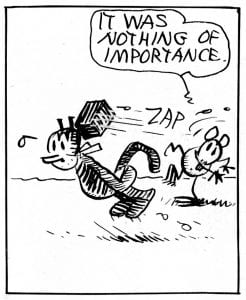 Frustration is classic for almost every reader of Lacan. Difficulty of learning theory is what theory is about! Take for example the difficulty of understanding the ‘RSI’ system, which is about domains rather than any definable entities; they are functions and forms that constitute the effectiveness of the psyche, but they are not delimited in the normal way that allows us to ‘draw a circle’ around them (hence the difference between Venn and Euler circles that Lacan harps on, and the reason why the Borromeo knot is not a Venn diagram).
Frustration is classic for almost every reader of Lacan. Difficulty of learning theory is what theory is about! Take for example the difficulty of understanding the ‘RSI’ system, which is about domains rather than any definable entities; they are functions and forms that constitute the effectiveness of the psyche, but they are not delimited in the normal way that allows us to ‘draw a circle’ around them (hence the difference between Venn and Euler circles that Lacan harps on, and the reason why the Borromeo knot is not a Venn diagram).
The Real, Symbolic, and Imaginary are not signifiers in the usual sense. In mathematics, we can have signs for things we can’t talk about and which exist in only an abstract way, and this is very helpful. We cannot easily talk about the Real although we know it exists and is powerful. It is a domain. Its relation to the other domains is in terms of its resistance to being absorbed by them. This is not a difficult idea! We know that a shadow, which has a definite material presence, cannot be merged with the body that creates it. Vico would say that we ourselves have made the rules by which this seems to be impossible. None of the three domains can be fully explained by the others, but they play a role in the relations of the other two. The fact that this is ALSO the logic of the Borromeo knot attracted Lacan’s attention and has been helpful. If you mark how the rings go over and under each other and make a table, you can see clearly that there is a ‘fourth ring effect’. READ THE FULL ESSAY
diagrams and mathemes
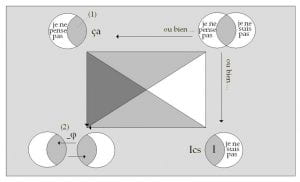
The diagram showing a divergence, from repetition, to positions inside and outside the symbolic (“acting out” versus the passage à l’acte) converging to the suppression structured by symmetrical self-sacrifice (example: O. Henry’s story “The Gift”) is unique to Seminar XIV but the structure is equivalent to both the L-Schema and the Discourse matheme of Agent, Other, Product, and Truth.
See the short silent video that twists the standard reference polygon for the torus this way and that to make a case that architectural/geographical space can also be “psychoanalyzed” by applying the differential diagnosis (between neurosis and psychosis) to look for the special cases of “ordinary psychosis” as an overlap between the two condition.
does the butterfly dream that it’s a man?
According to the Chinese philosophical classic Zhuangzi, the great Daoist thinker of that name fell asleep one day and dreamed that he was a butterfly. When he woke up, he did not know whether he really was a man who had dreamed he was a butterfly or whether he was a butterfly now dreaming he was a man.
Prepare to discuss one, two, or all three of these topics:
- nonsense
- the ‘logical square’ (above)
- the dream of Zhuangzi (Gallagher: “Choang-tsu,” p. 100)
- read this informative article, Creating a Void or Sublimation in Lacan, by Viviana M. Saint-Cyr. It will answer a LOT of questions! The Freudian-Lacanian THING, the void, and sublimation are about the same thing.
Slavoj Žižek discusses the Zhuangzi proverb in The Sublime Object of Ideology, p. 45. A Google Books version is available here.
While the main idea is to review the seminar IX (January 25, 1967), 91–102 in the Gallagher translation, the three topics touch on a wide range of Lacanian ideas, and it will be interesting to see what each of us comes up with.
To see the illustrations from the French Text, follow this link.
members’ pages/papers
Each workshop member is able to post notes, essays, drawings, or other materials for review and comments.
- D. Kunze, ‘Blah Blah Blah’, a consideration of the connections between nonsense (cf. Chomsky’s ‘colorless green discourse’), the blah blah blah (the Analysand’s chain-of-consciousness speech during Analysis), and projectivity. See also the silent video making a case for using Freud’s famous parapraxis (forgetting the name of the painter ‘Signorelli’) as a basis for understanding Lacan’s metaphor formula, with some help from Hitchcock.
- Yet another position paper from DK, XIV-notes for 9, this time attempting to blend the issues surrounding Euler circles, the objet petit a, metaphor, and parapraxis. As if that weren’t enough, Vertigo and The Divine Comedy is thrown in at the end. Check back for updates over Monday and Tuesday (March 28–29).
illustrations for session 12
As we have often found, the Gallagher text sometimes (almost always) misrepresents the graphics of the French transcript or, worse, leaves out graphic materials entirely. In Session 12 there are missing lines and diagrams, which we can supply here. For a speculative expansion of the quadrilateral Euler circles (below), follow this link. A text of the narrative here.
For a narrated and expanded video on the role of the unary trait, secondary virtuality (of the Real), and the relation of latency to ‘the perfect shadow’, click here. Transcript available.
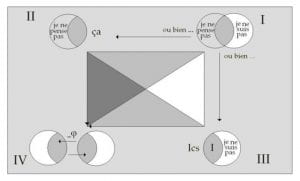
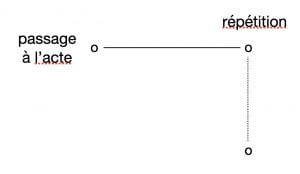
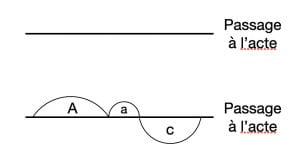
Note that A/a = C/A+a is the Golden Ratio
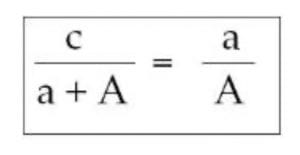
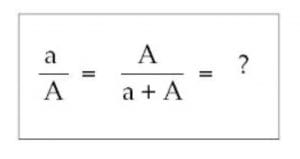
French transcript:
… cette autre valeur que j’ai fait surgir là et qui a un nom, qui ne s’appelle rien d’autre que le moins phi où se désigne la castration, -Ø, en tant qu’il désigne la valeur fondamentale. Je le réécris un peu plus loin: égale moins phi sur a plus grand A moins phi:
Gallagher translation: ‘Namely, the significant relation of the phallic function qua essential lack of the junction of the sexual relation with its subjective realisation; the designation in the very fundamental signifiers of the sexual act of this: that, although everywhere summoned, but slipping away, the shadow of the unit hovers over the couple, there appears nevertheless, necessarily, the mark — this by reason of its very introduction into subjective functioning — the mark of something which ought to represent in it a fundamental lack’. [emphasis mine]
Clearly, Lacan intends to involve the unary trait, in the form x = 1+1/x, in its Golden Ratio functioning … of allowing for change while remaining the same (homeostasis; idempotency). This relates to projective geometry in that this formula is both self-intersecting and non-oriented. The rectangle that follows, the last in this session, is therefore intended as a ‘reference polygon’ of the torus, which is different from the sphere in that there is a CUT between the speech act and speech as content. There are thus two voids, one based on the continence (= the position of acting out WITHIN the Symbolic), the other based on incontinence (= the psychotic stance of the passage à l’acte, OUTSIDE of the Symbolic). The essence of this session is the orientation of major themes within the form of the torus.
We return to the original rectangle where the linear relation of the passage à l’acte to répétition is filled out, first by ‘acting out’, then by ‘sublimation’.
bibliography
Heinz Hartmann, “Notes on the Theory of Sublimation,” Psychoanalytic Study of the Child 10:9-29. This essay is cited by Lacan in Session XII.
Jacques Lacan. “Secretaries to the Insane.” In The Psychoses. New York: W. W. Norton & Company, 1997, p. 207.
Jacques Lacan. “I’ve just been to the butcher’s.” In The Psychoses. New York: W. W. Norton & Company, 1997, pp. 50–51. [Google Scholar minimal reference only]
Jacques Lacan. “The Split between the Eye and the Gaze.” In The Four Fundamental Concepts of Psycho-Analysis. New York: W. W. Norton & Company, 1998, pp. 75–76. [Google Scholar]
Chinese Text Project. “莊子—Zhuangzi.” Available online: http://ctext.org/zhuangzi (accessed on 1 February 2015). (Z 2:20) denotes (Zhuangzi, Chapter 2: Paragraph 20): “Formerly, I, Zhuang Zhou, dreamt that I was a butterfly, a butterfly flying about, feeling that it was enjoying itself. I did not know that it was Zhou. Suddenly I awoke, and was myself again, the veritable Zhou. I did not know whether it had formerly been Zhou dreaming that he was a butterfly, or it was now a butterfly dreaming that it was Zhou. But between Zhou and a butterfly there must be a difference. This is a case of what is called the Transformation of Things.”
Hans-Georg Möller. “Zhuangzi’s ‘Dream of the Butterfly’: A Daoist Interpretation.” Philosophy East and West 49 (1999): 439–50. [JSTOR]
Viviana M. Saint-Cyr, Creating a Void or Sublimation in Lacan

